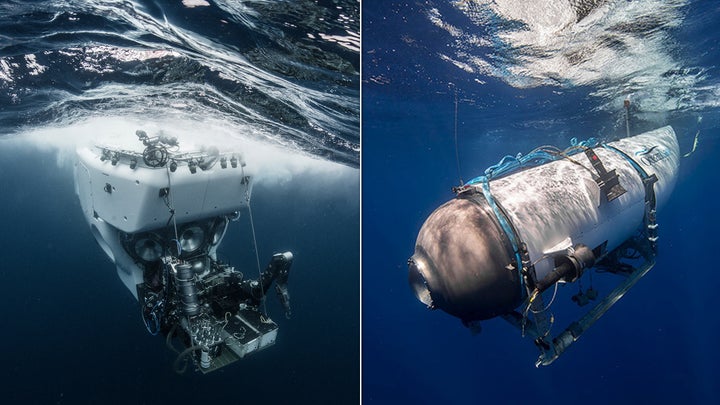
Samantha Joye, an oceanographer and microbiologist, has traveled to the deep sea in submersibles dozens of times.
But for all her passion and experience in the ocean, she would have never stepped foot in the Titan, the experimental sub that imploded last month during a dive to view the wreckage of the Titanic, killing all five people on board.
“As someone who dives in subs for a living, I would not dive in any vehicle that is not DNV GL certified,” said Joye, a professor at the University of Georgia, referring to the international safety society that certifies manned submersibles. “And I would not dive in a vehicle fabricated from titanium/carbon fiber. Seriously…OMG.”
Stockton Rush, the CEO and founder of OceanGate, violated numerous established norms and safety standards in developing the Titan. And he wasn’t shy about it.
“I’d like to be remembered as an innovator,” he said during a YouTube interview in 2021. “I think it was Gen. [Douglas] MacArthur who said, ‘You’re remembered for the rules you break.’ I’ve broken some rules to make this. I think I’ve broken them with logic and good engineering behind me. The carbon fiber and titanium — there’s a rule you don’t do that. Well, I did.”
The hulls of most deep-ocean subs are engineered from solid materials such as titanium, steel and acrylic, which can withstand repeated trips to extreme depths. Though carbon fiber is a go-to material in the aerospace industry, it is known to crack, fray and delaminate over time when exposed to such pressure — signs of which David Lochridge, OceanGate’s director of marine operations and chief pilot, observed in the Titan’s hull in early 2018, The New Yorker’s Ben Taub reported. Lochridge flagged the defects in a report to Rush and others at the company and was promptly fired.
Though many details about what exactly happened to the Titan remain unclear, Rush’s antipathy toward well-established rules and safety standards ultimately ended in tragedy. As Rush piloted the vessel, it experienced a catastrophic implosion on a June 18 dive, which experts speculate was likely the result of faulty engineering.
For 60 years, the small community of engineers, scientists and explorers involved in deep ocean submergence operated with a near-perfect safety record: zero fatalities and no major accidents. They hoped to keep it that way through rigorous certification and safety protocols for all manned underwater vehicles.
Many had long seen OceanGate for what it would ultimately become: a threat to that stellar record.
“The certification protocols that all other deep submergence vehicles, except [the Titan], that carry passengers, especially paying passengers — all over the world, in tropical waters, deep coral reefs, other wreck sites — the safety record is the gold standard,” James Cameron, the film director and deep-sea explorer, told ABC News following the Titan’s disappearance. “Not only no fatalities, but no major incidents requiring all of these assets to converge to a site.”
A deadly implosion was always in the back of the community’s mind, said Cameron, who helped design the Deepsea Challenger submersible and in 2012 piloted it to the Challenger Deep, the deepest known point of any ocean on Earth.
“That’s the nightmare that we’ve all lived with,” he said.
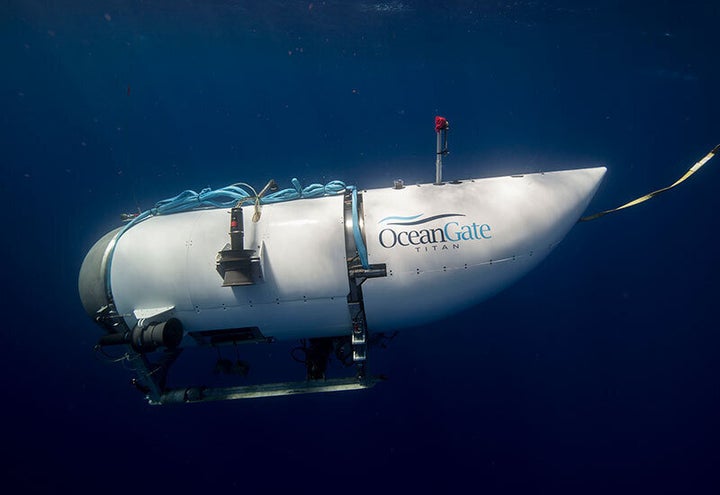
‘If You Go In, You Have To Come Back’
On a dive day, Bruce Strickrott wakes up early — around 3 a.m. — to begin a longstanding routine. He lies in bed and runs through the day’s mission in his head — the geography of the site, the target locations, scientific goals, the backgrounds of other crew members and any potential environmental challenges.
He calls it a “personal pre-dive” to get “dialed in” for the day’s work.
Few people have more experience in the deep ocean than Strickrott, manager and chief pilot of Alvin, the Navy-owned, three-person deep-sea submersible that is most famous for exploring the wreckage of the Titanic in 1986.
Since joining the Alvin group in 1996, Strickrott has been laser-focused on safety — a philosophy that he says is rooted in years of witnessing firsthand how the experience of traveling to the deep sea changes and inspires people. He calls himself a “zealot” for manned exploration of the world’s oceans.
“You have a visceral experience of being in a place that would kill you but being completely comfortable there, such that you can have this awakening, as I call it,” he said. “You can’t describe it. It’s very difficult, even with images. It’s not until you take people there and you basically are given the opportunity to share it with them. It becomes a personal mission to do it well, because you want them to walk away feeling like, ‘Holy cow, I just — I won’t be able to forget that.’”
“In order to enable that for others, you have to make sure it’s safe.”
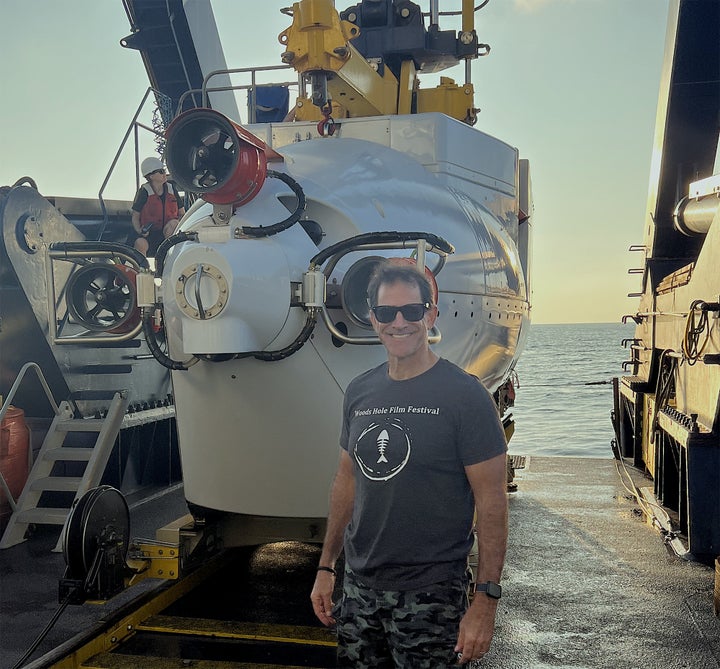
For Alvin, that involves routine inspections, recertifications and Navy audits. Every few years, the sub is completely disassembled, evaluated and put back together. It has undergone numerous upgrades over the last decade to allow it to dive deeper, and it’s now capable of accessing 99% of the ocean floor.
The sub’s systems, including life support and propulsion, also feature numerous redundancies to allow for its operator to continue to maneuver and surface the vehicle if a component were to fail. For example, there are multiple ways to release the heavy weights that carry the sub to the seafloor and are dropped when it returns to the surface.
But day-to-day, it is the crew of Alvin pilots and engineers that forms the front-line of safety. Prior to each dive, they meticulously test and check all components and systems. If an issue — a “Delta,” as Strickrott calls it — is discovered, the crew either fixes and rechecks the device or the dive is called off.
“During the pre-dive checks, as a pilot, there’s a lot of work to do,” Strickrott said. “You get very good at it. It becomes routine. But you have to force yourself to do them as if this is the first time. You have to dial your attention. You choose to be attentive, to look for things.”
Strickrott likes to remind his crew of times when Alvin members did just that. In the mid-2000s, for example, the Alvin team had procured new windows for the sub that had been pressure tested and appeared flawless. After a couple of dives with one of the new windows installed, the Alvin launch coordinator was looking the sub over ahead of another launch when he noticed “the most tiny, little Delta — this little image on the inner surface,” Strickrott said.
“He flagged it. And when we looked at it, we agreed and we delayed the dive and we pulled the window,” he said. “It turned out it was a material flaw that had started.”
Strickrott said the deformation would not have led to a catastrophic failure but would have gotten progressively worse with each dive. The incident ultimately led to several changes, including how the crew polishes the sub’s viewports.
“This is a really good example where a personally applied standard — nobody forced him to do that, he just felt obligated to because of his responsibility — made a difference,” he said.
Strickrott said he and others have spent decades fostering a culture on the Alvin team that is invested in a hierarchy of priorities: safety of the sub crew and other Alvin support personnel, safety of the vessel and, finally, the mission. He subscribes to the idea that there are three things that can get you in trouble: ignorance, arrogance and complacency.
“Whatever it takes to get home safely, you do it,” he said. “If you look at every day as an opportunity to dive … and you think, ‘We’d love to be in the water today, but we don’t have to.’ There isn’t anything pressuring us to go in the water except for one thing: If you go in, you have to come back.”
Alvin is owned by the Navy, operated by Woods Hole Oceanographic Institution in Massachusetts and principally funded by the National Science Foundation.
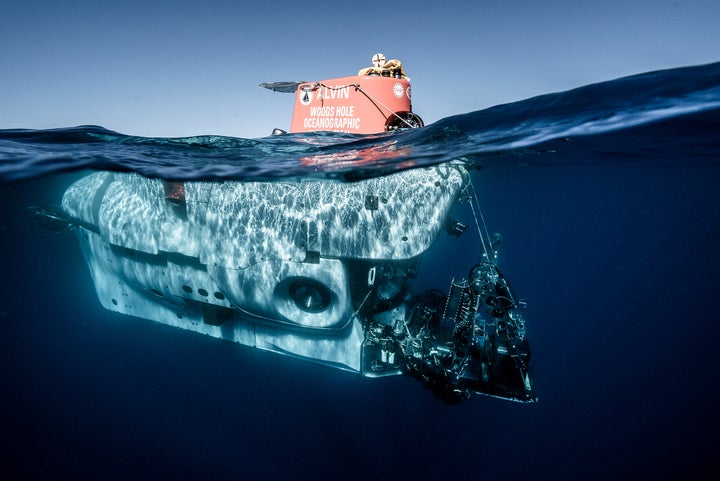
On his office wall in Woods Hole, Strickrott has an undated quote from George Broderson, an early Alvin crew chief and mechanic, that appears in Victoria Kaharl’s 1990 book, “Water Baby: The Story of Alvin.”
The quote reads in part:
“As deck senior, bo’s’un, honcho, crew chief, whatever… I attempt to keep the crew happy. So long as they get a kind word, they put out their best effort. I take the check-off list and I sign it. That means I have to trust each individual plus the fact that I double-check it anyway. Makes it a little bit more safe… It’s not exactly dangerous, but it can become hairy. It takes a combined effort to launch and recover the submarine. And the sun beats down, the hours go on.
You prepare the sub for a dive and you know when it’s all through, you’re going to have to postdive the sub because it cannot stand not being taken care of.”
Strickrott sees his role as helping further a legacy that many before him helped build.
“We’ve got 58 years of history and a legacy to uphold for people like this guy,” he said. “I think the other part of our responsibility — safety — is to live up to what those guys did. It sounds like a bunch of gobbledegook, but this is how I feel. And I’ve come to feel this way for a long time.”

Worst Fears Come True
Unlike Alvin, the Titan was never classed or certified by an independent organization. Its main dive target, the wreckage of the Titanic, which sank in 1912, is located in international waters, meaning the sub was not subject to any government’s laws or regulations. Its one viewport was certified for only 1,300 meters, only one-third of the depth of the Titanic’s resting place.
In 2018, 38 expert members of the Marine Technology Society, a leading industry group, sent OceanGate a letter voicing their deep concern about the Titan and the company’s planned excursions to the famous shipwreck.
“Our apprehension is that the current experimental approach adopted by OceanGate could result in negative outcomes (from minor to catastrophic) that would have serious consequences for everyone in the industry,” the group wrote. The letter touted the industry’s stellar safety record and pleaded with OceanGate to adhere to established standards. “Our members are all aware of how important and precious this standing is and deeply concerned that a single negative event could undo this.”
Rush dismissed this and other experts’ safety concerns, including from some of his own employees, repeatedly arguing that regulation stymies innovation.
When deep sea explorer Rob McCallum emailed Rush in 2018 to warn that he was putting himself and others at risk, Rush fired back that he was “tired of industry players who try to use a safety argument to stop innovation.”
“We have heard the baseless cries of ‘you are going to kill someone’ way too often,” he wrote, according to emails first obtained by the BBC. “I take this as a serious personal insult.”
In a now-deleted 2019 blog post titled “Why Isn’t Titan Classed?,” OceanGate wrote that “bringing an outside entity up to speed on every innovation before it is put into real-world testing is anathema to rapid innovation” and compared what it was doing to SpaceX, billionaire Elon Musk’s rocket and spacecraft manufacturer, which at the time, unlike OceanGate, was advancing its rocket capabilities without passengers on board. Many liftoffs ended in fiery explosions.
Experts HuffPost spoke with dismissed the comparison as patently false, pointing out that SpaceX vehicles are subject to myriad U.S. regulations, particularly the vehicles that have carried people.
“I will never understand how this ‘adventure’ was sold to paying customers,” Joye said. “I know people participating had to sign a waiver, but I don’t believe that they truly understood the risk they were taking. The Titan should have had ‘Experimental Prototype’ plastered all over it in 100-point type.”

Rush’s cavalier attitude was perhaps on fullest display during an interview last year with CBS journalist David Pogue.
“At some point, safety just is pure waste,” he said. “I mean, if you just want to be safe, don’t get out of bed. Don’t get in your car. Don’t do anything.”
Experts say Titan’s fate only further confirms the importance of strong safety protocols when operating in the unforgiving deep sea.
“There’s an industry standard for a reason,” said Erik Cordes, a deep sea ecologist and professor at Temple University. “You can’t skimp around the certification process just to advance the technology. That’s not a good enough reason when you’re actually putting people on the bottom of the ocean.” (I dove aboard Alvin with Joye off the Atlantic coast in 2018. Strickrott was the expedition leader on the two-week expedition. Cordes was the chief scientist.)
Strickrott was one of the experts who signed on to the letter of concern to OceanGate in 2018 in his personal capacity. In his interview with HuffPost, he mostly steered away from discussing the Titan accident or criticizing OceanGate but said he’s followed updates closely and sees the incident as an opportunity to both reflect on what the Alvin team does well and explore what it can do better.
“I think it’s important for us to try to get away from the finger-pointing. There were mistakes made, but there were people that died,” he said. “I think it’s a renewed dedication to keep at it and keep doing it right.”
An Eye Toward The Future
The Titan’s highly controversial design and lack of third-party certification stands in stark contrast to Alvin and virtually every other submersible operating in the deep sea. Yet its demise has tarnished a decades-long safety record and thrust the entire industry into the spotlight, with some calling for more stringent regulations.
The U.S. Coast Guard last month launched an investigation to determine the cause of the implosion, if “an act of misconduct, incompetence, negligence, unskillfulness, or willful violation of law” contributed to the disaster, and whether new laws or regulations are warranted to prevent future disasters.
The Titan incident may have brought public scrutiny to the industry, but it hasn’t rattled Cordes’ confidence in the field.
“I think there is a really important place for manned exploration,” he said. “I don’t think you can do everything with [remotely operated vehicles]. It’s just not the same.”
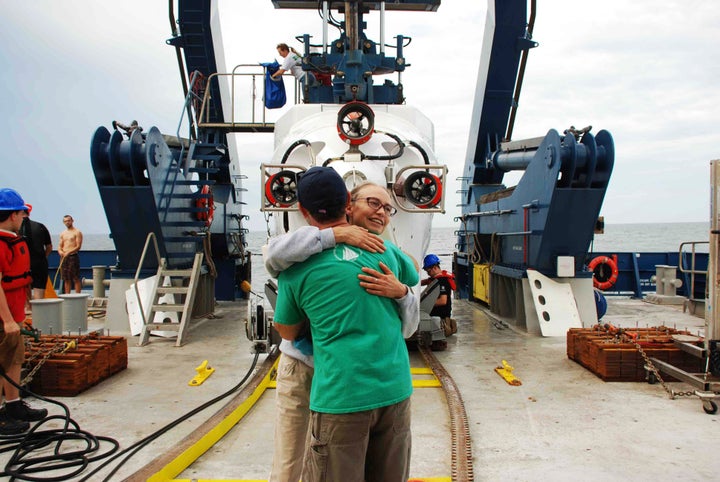
Strickrott agrees.
“I have no fear that this is going to have a major negative on deep-sea vehicles,” he said. “I think in some ways it might reinvigorate interest.”
Strickrott fiercely disagrees with the idea that safety standards stifle innovation. He acknowledged that the certification process can be time consuming, even frustrating, but said the end result is worth it.
“One of the things we get is we are not relying on ourselves for these really important things,” he said. “We’re getting a second opinion from a group of subject matter experts.”
“The alternative to doing it well is pretty awful,” he added. “In fact, it means the end to all those things you care about.”
Though the scientific value of deep sea exploration is obvious, Strickrott says it offers something much more profound for those fortunate enough to travel to the deep.
“What you’re experiencing is something I think people take for granted in their daily lives, which is that humans have reached a point in their evolution where we modify the world around us. One way we do that is through technology,” he said. “I think it’s a reflection of what the power of being human really is.”
In the decades-old quote that adorns Strickrott’s office wall, Broderson reflected on the struggles of keeping Alvin in the water and the magnitude of the work:
“Yeah, the thing has a grip on us. You don’t want to yell quits because you know that you can lick whatever it is, and in doing so, you put yourself in a special class, you know you’ve done something important. Basically we’re an adventure outfit. Takes some of the sting out of the long hours.”
The human brain is wired for adventure, Strickrott said. It’s part of who we are. It’s why NASA has planned new missions to the moon and set its sights on eventually reaching Mars, he said.
“If people are thinking this is the death knell for exploring the bottom of the ocean — first of all, I don’t,” Strickrott said. “My God, there’s so much left. There are generations of opportunities. We really want people to be inspired and to consider this.”
“We’re supposed to do these wacky things,” he added. “Whenever people ask, ‘Should we stop?’ I always remind them that that is a good way to limit our ability to learn things.”
Clarification: A photo caption has been amended to clarify Alvin’s role in a 1966 bomb recovery mission.
